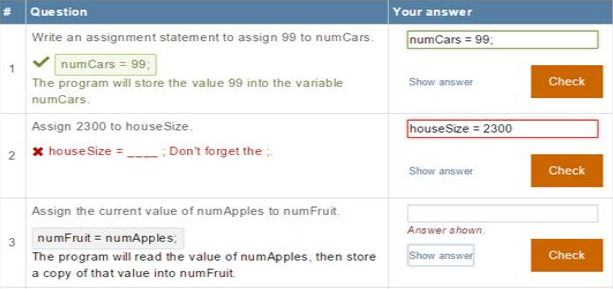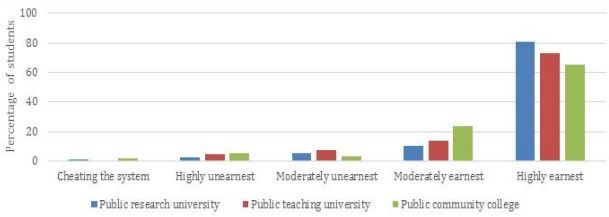You have /5 articles left.
Sign up for a free account or log in.

iStock
Most students will make an earnest attempt to answer homework questions without peeking at the answer, even if cheating is just a click away, a new study found.
In the study, which was presented this week at the annual conference of the American Society for Engineering Education, researchers at the University of California, Riverside, explore a lingering concern many faculty members have about online education or digital course materials: that the design of homework assignments will lead students down the path of least resistance, blazing through study questions without learning much at all.
“Instructors commonly ask us: If students can show and copy-paste the answer to receive credit, won’t most just do that to receive homework credit, without earnestly trying?” the report reads.
The researchers, Frank Vahid, Alex Daniel Edgcomb and Joshua Sai Yuen, looked at how students used the learning platform zyBooks to answer that question. (Vahid, professor of computer science, co-founded the start-up; Edgcomb, a research specialist at the university, serves as a senior software engineer; and Yuen, a current student, is a developer there.) The start-up, which bills its products as "interactive textbook replacements," offers digital course materials in STEM fields, using animation and interactive elements in an attempt to get students more excited about learning.
For the study, which was supported by the National Science Foundation and Google, the researchers looked at how 553 students taking the same introductory programming course approached homework questions. The short-answer questions challenged students to type out a short bit of code and then press a button to check their answer (see below for an example). Answering incorrectly produced a hint, but otherwise, students could keep guessing without losing points. Students could, however, click the “Show answer” button and paste the answer into the box -- again, without being penalized.
The students, who at the time the data was collected -- fall 2014 -- attended a public research university, a public four-year university and two community colleges, did not know their studying habits would be analyzed.
The results contain encouraging news for those suspecting students are always on the lookout for ways to breeze through their homework. In fact, few students were tempted by the “Show answer” button.
About nine out of 10 students (89 percent) answered homework questions earnestly more than 60 percent of the time. Nearly three-quarters of students (73 percent) landed in the category the researchers defined as “highly earnest,” taking a stab at the questions before clicking to reveal the answer more than 80 percent of the time.
Only a handful of students -- about 1 percent -- cheated the system, the researchers found, answering questions earnestly less than 20 percent of the time. The average earnestness was a “rather high” but not surprising 84 percent, they write.
“We believe most students really want to learn, so most would not cheat a learning system if it is well designed,” Edgcomb said in an email. “But of course we wanted confirmation of that belief. And we had several instructors bring up the question, so we wanted to confidently be able to answer them as well.”
Furthermore, the findings contain some pointers for faculty members about how to effectively use digital course materials to ensure students grasp important concepts.
One factor faculty members should keep in mind is tiredness. As students progressed through the course, they became more likely to click the “Show answer” button before attempting to answer the homework questions. Early in the course, students at all three types of institutions answered questions earnestly more than 90 percent of the time. By the time they tackled the last 38 homework questions, that rate had fallen about 20 percentage points. Although there were some differences between the types of institutions, those findings were not statistically significant.
Edgcomb said in the email that he and the other researchers hope to investigate if course content itself can keep students engaged for the duration of the course. He added that “good teachers already apply various techniques [to combat tiredness].”
While students grew steadily more tired as the semester went on, the researchers also discovered occasional blips or “troughs in earnestness” where a large number of students would peek at the answer to a question. Going back to look at the questions where the troughs occurred, the researchers realized they were all badly formulated or incorrect questions that confused students.
“Upon investigating why particular learning questions had unusually low earnestness, we discovered those questions themselves needed improvement,” Vahid said in an email. “While we already make it easy for students to send us feedback and we use that feedback to improve our learning questions, this study taught us that measuring earnestness is another powerful way for authors to improve their content -- and we'll be incorporating that into our processes.”










